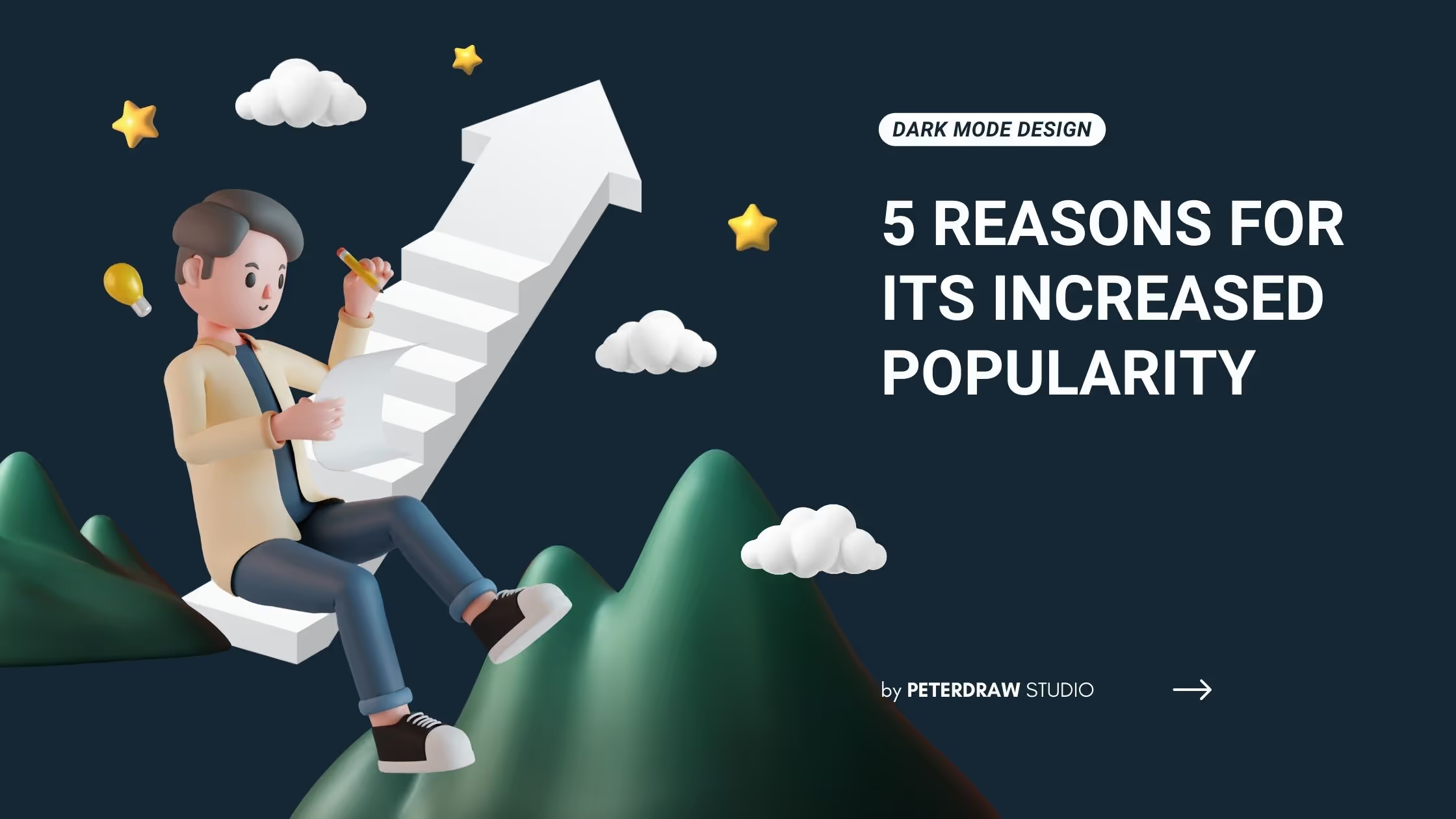From Web2 to Web3: How Web3 in Web Design Is Redefining Online Ownership
See how web3 in web design blends blockchain, wallets, and UX to create secure, decentralized, user-first digital experiences.

It’s been several years since dark mode gained its popularity. Its elegant look is not the only thing attracting users. The mode reduces the light emitted by device screens. So, avid gadget users who tend to have eye strain from the light mode are highly recommended to use the mode. The availability of dark mode design for website or application interfaces becomes the most required for most users.
Implementing dark mode in UI design is like adjusting the brightness of a lamp in a room. Just as dimming the light creates a more comfortable atmosphere for reading and relaxation, dark mode reduces the glare from screens, making it easier on the eyes, especially in low-light conditions.

In UI design, dark mode is not only a display option for an application or website. It is a design strategy that applies the opposite approach of traditional light mode. This strategy uses a dark color palette for backgrounds, with lighter text, icons, and UI elements. It aims to reduce the brightness of the screen. So, it creates a UI that is visually comfortable in low-light conditions and potentially more energy-efficient on certain display types.
The popularity of dark mode didn’t just happen. Its initial appearance was decades ago. Its re-emergence in the mid to late 2010s brought its popularity to its current level. Some still prefer the light mode out of habit. However, the following will be undeniable reasons to start creating dark mode designs under user comfort and technical considerations.
Regardless of location and condition, people spend more time looking at screens. Unfortunately, looking at the screen for too long with inadequate lighting is bad for eye health. Dark mode can reduce eye strain in low-light conditions. Its lower brightness levels help mitigate this issue, making screen viewing more comfortable for many users during the evening or in dark surroundings.
Dark mode not only contributes to the design aesthetics of a UI. It also contributes to power savings, especially on devices with OLED and AMOLED screens. Using dark mode can significantly reduce power consumption. Mobile devices perform this advantage notably since they prioritize extended battery life.
Although it is not the key, the dark mode aesthetic is the main reason some users and designers prefer it. Incorporating dark backgrounds can make other colors pop. Furthermore, they improve the visual contrast of text, images, and UI elements. This appearance can lead to a less monotonous and visually engaging user experience. Moreover, if used on an application or website that focuses on media consumption and graphic content, the results will be better
It might be debatable that blue light interferes with sleep patterns. However, dark mode design indeed can lower the exposure to blue light from the screens. Since the perception that exposure to blue light and sleep problems are related, the dark mode contributes to the idea that it is healthier for evening or nighttime use.
A more accessible and user-friendly web and apps are more acceptable to wider users. Applying the dark mode allows users with certain visual impairments or sensitivities to have a more comfortable viewing experience. It helps them to read and interact with content more effectively. It can be an effective strategy to gain a new target audience, improving the presence rate.
Designing dark mode is not merely using dark colors and contrasting elements. A designer must consider that the user interface remains accessible, aesthetically pleasing, and functional under a dark color scheme. Here are the best practices for the best dark mode design.
Q: Does dark mode save battery on all devices?
A: Dark mode can save battery life on devices with OLED and AMOLED screens, as these display technologies can individually turn off pixels to display true black, consuming less power. However, the impact on battery life may vary depending on the device’s screen technology and usage patterns.
Q: Can dark mode improve sleep quality?
A: There is some evidence to suggest that exposure to blue light from screens, particularly in the evening, can interfere with sleep patterns. Dark mode, by reducing blue light emission, may contribute to better sleep quality for some individuals, especially when using devices before bedtime.
Q: Is dark mode suitable for all users?
A: While many users find dark mode visually appealing and comfortable, preferences for light or dark interfaces can vary. Some users may prefer light mode due to habit or personal preference. It’s essential to provide users with the option to choose their preferred mode to accommodate different needs and preferences.
Q: Does dark mode improve accessibility for visually impaired users?
A: Dark mode can improve accessibility for users with certain visual impairments or sensitivities. The high contrast between text and background in dark mode can make content easier to read for some individuals. However, it’s essential to consider individual user needs and provide options for customizing the display to accommodate diverse accessibility requirements.
As dark mode design gains traction, it’s clear that its appeal extends beyond aesthetics. The practical benefits of reduced glare and energy consumption make it a strategic choice for designers and users alike. Implementing dark mode is not only a nod to user preference but also a step toward more sustainable and health-conscious design. Whether for enhancing accessibility or simply enjoying the sleek look, dark mode design is here to stay.